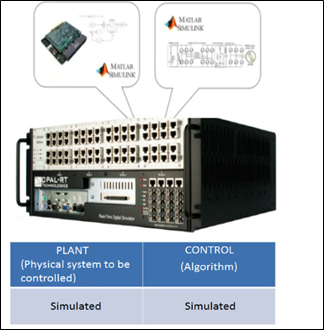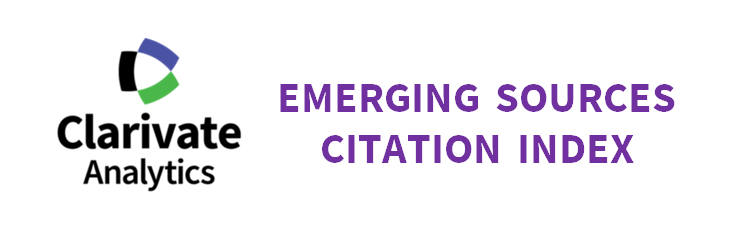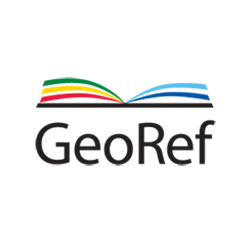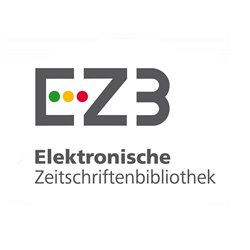Power Quality Study in Distribution Networks with High Penetration of Renewable Energies using Real-Time Simulation
DOI:
https://doi.org/10.17981/ingecuc.20.1.2024.12Keywords:
Power quality, distributed energy resources, real-time simulation, harmonics, flicker, direct current injectionAbstract
Introduction: The power supplied to the load through the distribution network comes mainly from conventional energy sources. However, a transformation is being made towards sustainable and efficient electricity networks, which incorporate distributed renewable energy sources and closer to consumption. This process has led to the investigation of the effects that the inclusion of distributed energy resources brings, which have shown power quality issues. However, more studies are required to show more detailed effects and the use of new tools such as real-time simulation.
Objective: This paper uses real-time simulation to evaluate the impact on the power quality produced by integrating distributed energy resources (DER) into a distribution network.
Method: The IEEE 13-node test feeder system was used to evaluate voltage harmonics, current harmonics, flicker, and DC injection based on the IEEE 1547-2018, IEEE 519-2014, and the NTC 5001-2008 standards. The feeder test system was implemented in the Hypersim software and used to run real-time simulations.
Results: The results show that integrating distributed energy resources into the network produces a high impact on the current harmonics of the network.
Conclusions: The DC injection phenomenon presents a medium impact, and flickers and voltage harmonics present a lower impact.
Downloads
References
D. González Herrera, G. Luna Russi, and E. Rivas Trujillo, “Evaluación del impacto de la generación distribuida mediante índices normalizados con base en la normatividad colombiana y estándares IEEE,” Ingeniería, 2015.
M. I. Carvajal, E. Gómez-Luna, and E. M. Sáenz, “Methodology for technical feasibility analysis in the installation of microgrids,” J. Eng. Sci. Technol. Rev., vol. 12, no. 5, pp. 176–187, Oct. 2019.
Z. Deng and G. Todeschini, “A novel approach for harmonic assessment of power systems with large penetration of IBRs –A UK case study,” IEEE Trans. Power Delivery, pp. 1–12, 2023.
G. Švenda, I. Krstić, S. Kanjuh, M. Jajčanin, and D. Vuletić, “Volt Var Watt Optimization in Distribution Network with High Penetration of Renewable Energy Sources and Electric Vehicles,” in 2022 IEEE PES Innovative Smart Grid Technologies Conference Europe (ISGT-Europe), 2022, pp. 1–5.
L. Strezoski and I. Stefani, “Utility DERMS for Active Management of Emerging Distribution Grids with High Penetration of Renewable DERs,” Electronics, vol. 10, no. 16, p. 2027, Aug. 2021.
J. Wang, X. Du, G. Li, and G. Yang, “Harmonic analysis of the interconnection of wind farm,” in Lecture Notes in Electrical Engineering, Berlin, Heidelberg: Springer Berlin Heidelberg, 2011, pp. 1031–1038.
N. Hatziargyriou, Microgrids: Architectures and Control. John Wiley & Sons, 2014, pp. 1–344.
J. Valinejad, M. Marzband, M. Korkali, Y. Xu, and A. S. Al-Sumaiti, “Coalition Formation of Microgrids with Distributed Energy Resources and Energy Storage in Energy Market,” Journal of Modern Power Systems and Clean Energy, vol. 8, no. 5, pp. 906–918, Sep. 2020.
L. F. Gaitán, J. D. Gómez, and E. Rivas-Trujillo, “Quasi-Dynamic Analysis of a Local Distribution System with Distributed Generation. Study Case: The IEEE 13 Node System,” TecnoLógicas, vol. 22. pp. 195–212, 9 2019.
J. G. Villarreal-Montoya, E. Gomez-Luna, and E. Marlés-Sáenz, “Power Quality Assessment of the Interconnection of a Microgrid to a local distribution system using Real-Time Simulation,” DYNA, vol. 87, no. 213, pp. 28–33, 2020.
P. M. Ivry, D. W. P. Thomas, and M. Sumner, “Assessment of power quality in a microgrid with power electronic converters,” in 2016 Asia-Pacific International Symposium on Electromagnetic Compatibility (APEMC), 2016, vol. 01, pp. 825–827.
J. H. R. Enslin and P. J. M. Heskes, “Harmonic interaction between a large number of distributed power inverters and the distribution network,” IEEE Trans. Power Electron., vol. 19, no. 6, pp. 1586–1593, Nov. 2004.
Institute of Electrical and Electronics Engineers - IEEE, “IEEE 1547-2018. IEEE Standard for Interconnection and Interoperability of Distributed Energy Resources with Associated Electric Power Systems Interfaces,” 2018.
Institute of Electrical and Electronics Engineers - IEEE, “IEEE Std 519-2014. IEEE Recommended Practice and Requirements for Harmonic Control in Electric Power Systems,” 2014.
Icontec, “NTC 5001 de 2008,” 5 2008.
S. R. Castaño and E. A. C. Plata, Calidad del Servicio de Energía Eléctrica, Primera Edición., vol. 1. Universidad Nacional de Colombia, 4 2006, pp. 1–396.
J. L. Strack, S. Juan Antonio, G. F. Di Mauro, and S. B. Jacob, “Impacto de la iluminación residencial eficiente en la calidad de la energía de una red de distribución,” 2014.
D. González Herrera, E. Rivas Trujillo, and N. E. Vera Parra, “Impacto de la generación distribuida sobre el flujo armónico en redes de distribución,” Redes de Ingeniería, pp. 18–23, Sep. 2017.
International Electrotechnical Commission, “IEC 61000-4-15:2010. Electromagnetic compatibility (EMC) - Part 4-15: Testing and measurement techniques - Flickermeter - Functional and design specifications,” International Electrotechnical Commission.
E. Gómez Luna and J. E. Candelo Becerra, “Current Status and Future Trends in Protection, Control and Communications Testing in Electrical Grids using Real-time Simulation,” Journal of Engineering, 2018.
W. H. Kersting, “Radial distribution test feeders,” IEEE Trans. Power Syst., vol. 6, no. 3, pp. 975–985, 1991.
Etap, “Validation Cases and Comparison Results.” 2005.

Downloads
Published
How to Cite
Issue
Section
License
Copyright (c) 2024 INGE CUC

This work is licensed under a Creative Commons Attribution-NonCommercial-NoDerivatives 4.0 International License.
Published papers are the exclusive responsibility of their authors and do not necessary reflect the opinions of the editorial committee.
INGE CUC Journal respects the moral rights of its authors, whom must cede the editorial committee the patrimonial rights of the published material. In turn, the authors inform that the current work is unpublished and has not been previously published.
All articles are licensed under a Creative Commons Attribution-NonCommercial-NoDerivatives 4.0 International License.


 English
English
 Español (España)
Español (España)






















